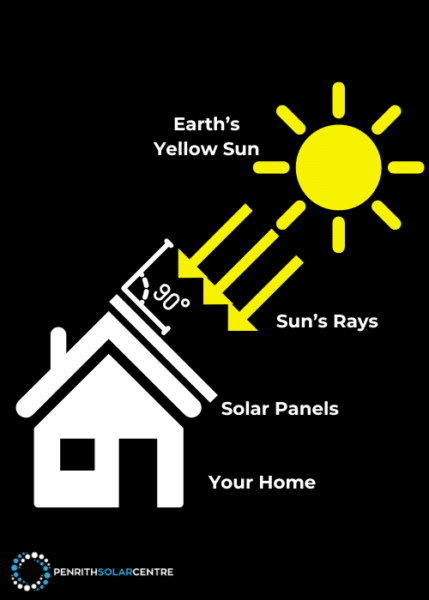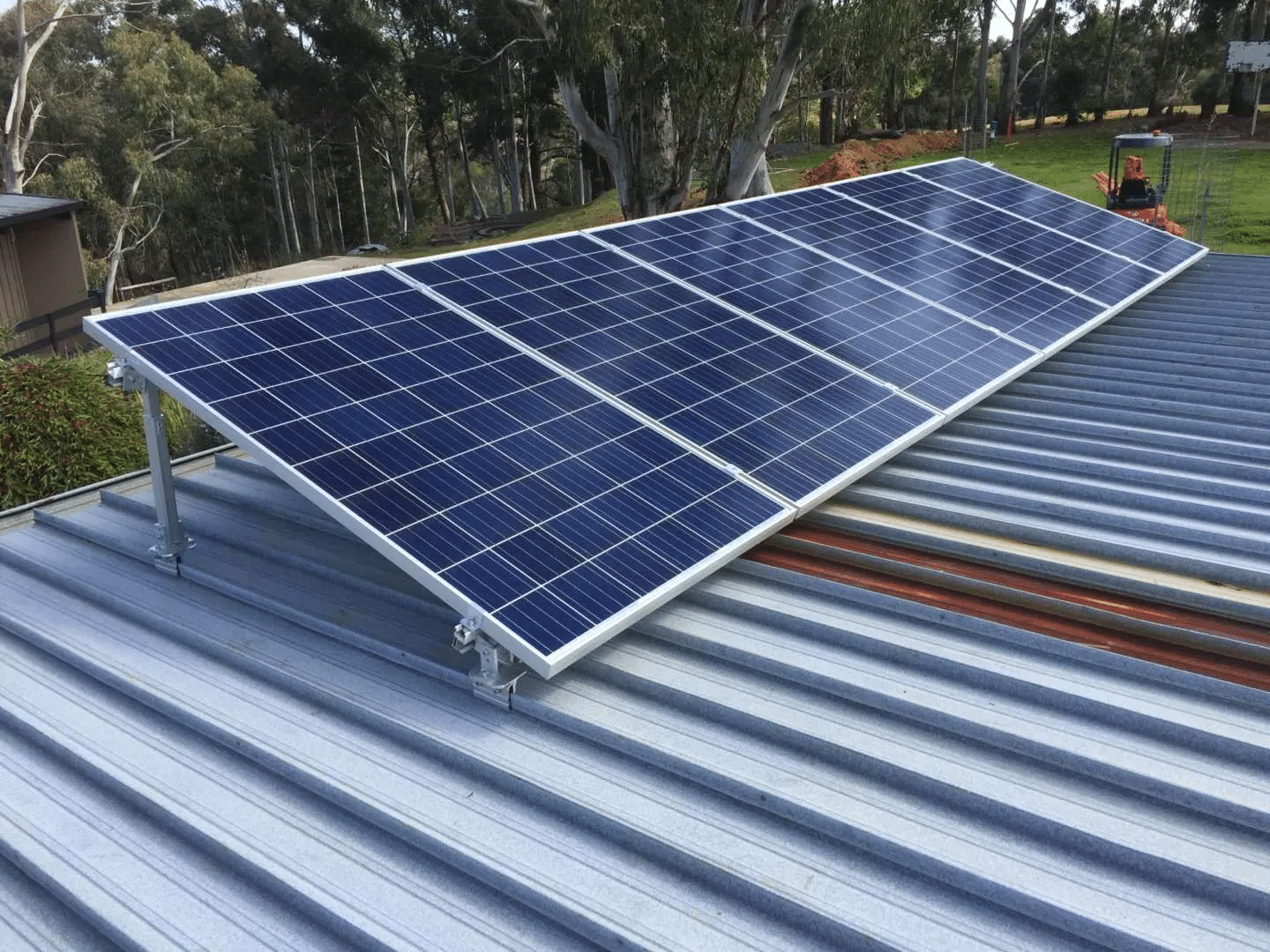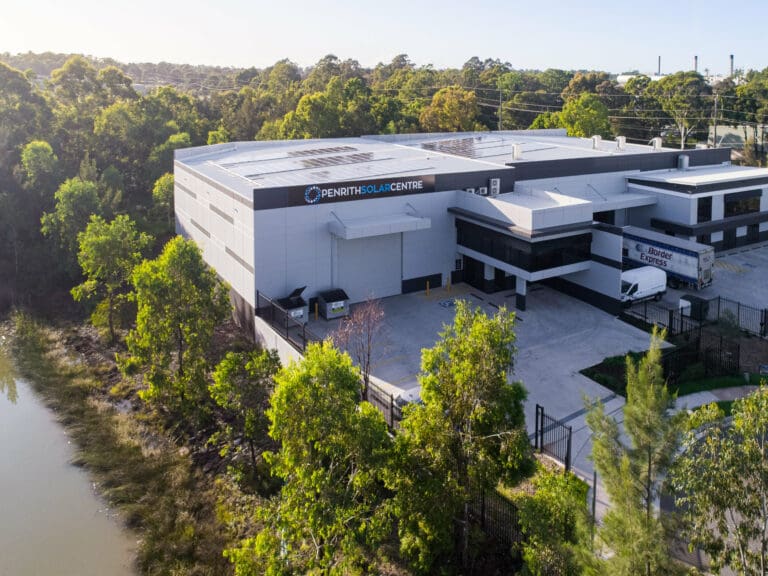
If you’re considering the purchase of a solar system and if you have an irregular roof shape with limited space (or a southern-facing swatch of the roof), you’ve probably encountered someone online praising the use of tilts to overcome this problem.
Honestly, things like an irregular roof shape or a southern-facing roof are not a problem for most solar systems. It can be a challenge, but never a problem.
Installing solar panels on tilts, however, can be risky for your home and your system at best and flat-out dangerous at its worst.
Penrith Solar Centre is here to clear up some misconceptions about installing solar panels on tilts. At PSC, we don’t install solar panels on tilts – just so you know, we’re a bit biased on this topic. There are risks involved in this type of installation, five of them that we’ll get into in this article.
However, we’re going to do our best to give you a balanced perspective. It’s far more important to us as solar educators to provide unbiased perspectives and let you make up your own mind about it. After all, our ultimate goal is helping Australia reach net zero by 2050.
In this article, you will discover the following:
- What Are Tilts for Solar Panels?
- 5 Common Problems with Tilts
- Wind
- Shading
- Noise
- Fewer STCs
- Cost/Labour
- The One Time You Must Install Solar Panels on Tilts
By the end of this article, you’ll be well-informed on the potential problems of installing solar panels on tilts.
What Are Tilts for Solar Panels?
Tilts. Sounds like… stilts. Honestly, you’re not too far off with that word association. Tilts work like little stilts for your solar panels; raising one side of the panel while keeping the opposite side lower. This creates an angle for the solar panel to be mounted.
Solar panels on tilts are fastened to your roof in much the same manner as solar panels alone would be installed.
Why would you do this?
The idea is to get the most direct sunlight exposure on the solar panel as humanly possible. The tilts, well, tilt the solar panel to best approximate a fully exposed surface for the sun to joyously shine across.
The angle at which the sun’s rays hit the solar panel’s face does impact the efficiency of the solar panel. The best way to accomplish this is to angle the solar panel so sunshine hits it at a perfect 90° angle. It is direct sunlight that is more direct than if the rays were hitting the panel from a different angle.

So then, you must acknowledge that the angle at which the sun hits a solar panel affects its efficiency. But how much does it really affect it?
It depends.
Another important consideration when figuring out the angle of your solar panels to best capture the angle of the sun’s rays is this: season. The angle of the sun’s rays will vary throughout the year anyway because the sun moves from north to south throughout the year just as routinely as it moves from east to west daily.

This means, all that work to put your solar panels on tilts to get that perfect 90° angle will be shot for half the year.
Unfortunately, some folks are determined to use tilts on their solar panels. There are risks involved in that decision.
For more information on how your solar panels behave in relation to the sun, check out the following article title Which Way Should Solar Panel’s Face in Australia?
Get your free quote and solar design
5 Common Problems with Tilts
Problem #1 – Wind
In a windstorm, which Sydney gets on a regular basis, solar panels mounted on tilts act just like a sail. A gust of wind will blow across the roof of your home where your solar panels are mounted up on tilts and catch the panels from underneath. How securely are they mounted on the roof?
Tilts are extra weight on your roof as well.
That being said, there are options for weighing down a tilt rack system. Schletter, our preferred racking system provider, offers a ballast-optimized racking system for flat roofs. Here’s a video about how that product works:
Problem #2 – Shading
Solar panels on tilts will shade one another depending on the location of the sun in the sky. And where the sun is in the sky is determined by the time of day or season. In the summertime, in Sydney, the sun is directly above us. Flat panels are super-efficient in the summertime.
In the winter or at sunrise or sunset, the sun’s rays are going to hit the solar panel mounted at an angle on tilts. Because they will be installed in rows close to each other, the top portion of one solar panel will shade the bottom portion of the panel behind it at certain times of day (or season).
Shading on a solar panel is widely inefficient. It’s in fact the worst thing for a solar panel. They only work in the sun.

Problem #3 – Noise
Picture a big bank of solar panels: 5 x 3, 15 total. When you install those panels on the roof, the roof underneath them is then shaded from the sun because the sun is hitting the solar panels, as designed.
When you put panels on tilts, that bank of solar panels is no longer fully covering the roof with shade. The roof has a row of shadows from the solar panels on tilts, but in between those shadows (at certain times of the day or certain times of the year) the sunlight is directly hitting the roof. So the roof is hot in places where the sun is hitting it, and cooler in the places where the panels on tilts are shading the roof.
You have stripes of sun, shade, sun, shade. Or hot, cool, hot, cool.
The roof will actually expand and contract in this situation. It happens at different rates and ends up making huge cracking and popping sounds. It’s really frightening when it happens.

Problem #4 – Fewer STCs
Solar panel energy production is inhibited by putting solar panels on tilts. This is pretty wild because the whole purpose of putting solar panels on tilts is to increase the productivity of your solar system.
When you install solar panels on tilts on your roof, you’re going to lose some solar panels in the arrangement. This is because of how you need to stagger them to ensure they have a line of sight with the sun. Generally, you’ll lose a row of three to four panels for a bank of 15.
The government STC scheme is based on the amount of predicted electricity a solar panel system can output. It doesn’t account for their efficiency (which is moot because the efficiency of the system really isn’t affected anyway, as we discussed above).
Fewer panels equals fewer STCs, which in turn equals more cost per panel to install your solar system.
For more information on STCs, feel free to check out the following article titled How Does the Solar Rebate Work?

Problem #5 – Cost/Labour
Tilts are physically heavy and cumbersome. Because they’re so labour-intensive, tilts require extra time which equals extra costs. It’s a really simple calculus here.
It’s a challenge to attempt to match the efficiency of solar panels flush on a southern-facing roof with panels on that same roof on tilts. The southern-facing roof panels that sit flush will outperform the ones on tilts every time.
Here are some figures:
Everything here is contingent on roof real estate. Because we typically install 10kW systems on average, we’ll use that as a control for figuring out a sample roof size.
42 square metres will support around 24 panels which is about the size of a 10kW system.
In that same 42 square metres, panels on tilts will need to be spaced out a bit. Suddenly, 24 panels are now closer to 18 panels and only capable of outputting 7kW or so. The STCs will be lesser as well, so you won’t get as much savings there either.
Additionally, the cost of the tilt frame itself is about $25 per panel. For a system of 18 panels, that’s an additional $450.
The One Time You Must Install Solar Panels on Tilts
If you have a flat roof and you’re getting solar panels installed, you will need a very short tilt frame to ensure that the panels are angled at a minimum of 3°. A little more than that would be even better (but less than 10°). Solar panel manufacturers will not warranty solar panels that lie perfectly flat. Why is this?
Rainwater. Solar panels are waterproof but when the rain puddles on the panel, it’s bad for the panel. The rainwater keeps the panel clean from dust and debris like bird or bat faeces when it can run down the panel and clean it off.
On a perfectly flat solar panel, once the rain stops, there’s a big puddle right in the middle of the panel. This will prevent it from harvesting all that beautiful sunshine for you.

To Tilt or Not to Tilt?
The challenges and opportunities of installing solar on an irregular roof or on a southern-facing roof are fascinating and exciting to us.
Choosing the most appropriate roof space to install solar panels on is essential. Considerations like energy consumption patterns should really dictate such decisions. These can be discussed with any solar installer who knows what they are doing.
Whether or not you choose to install your solar panels on tilts is entirely up to you. However, there are problems and risks associated with installing tilts.
At Penrith Solar Centre, we recommend a more straightforward approach to your solar system, as it often produces better results. There are so many potential solutions to the problem of roof real estate.
If you’re interested in discovering how you might install solar panels on your roof, you might be interested in the following article titled Can You Install Solar Panels on a Southern-facing Roof in Australia?










